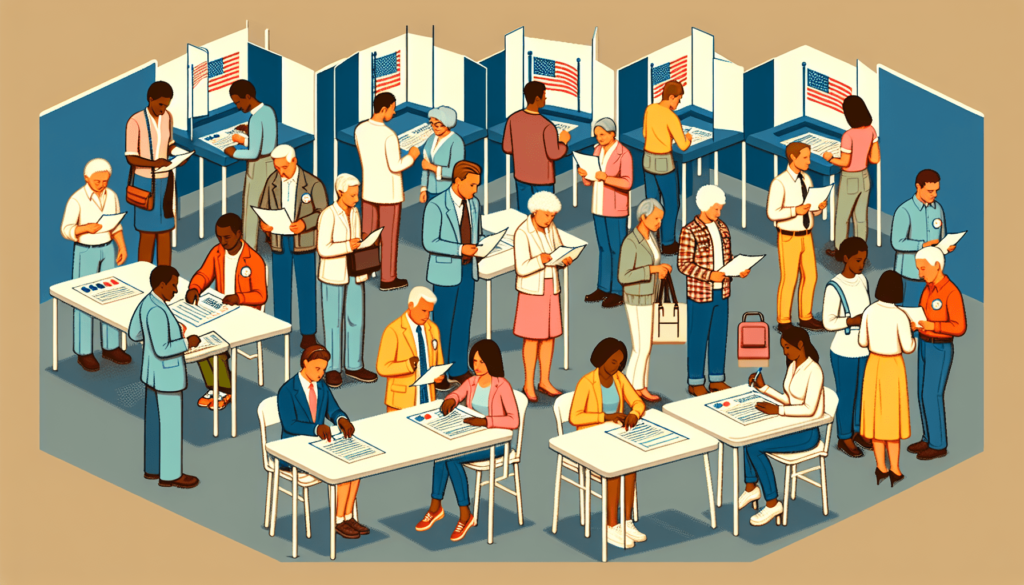Understanding the Importance of Voter Contact and Outreach
Ensuring effective voter contact and outreach is crucial for any political campaign. It helps to engage and inform voters about the candidates and their policies, ultimately driving voter turnout. In this article, we’ll explore how you can effectively manage voter contact and outreach strategies.
What is Voter Contact and Outreach?
Voter contact and outreach refer to the various methods and tactics used by political campaigns to communicate with voters. This can include canvassing, phone banking, sending direct mail, and digital advertising, among other strategies. The primary goal is to educate voters, persuade them to support a particular candidate, and mobilize them to vote on Election Day.
The Role of Voter Contact and Outreach in Political Campaigns
Voter contact and outreach play a crucial role in the success of political campaigns. By directly engaging with voters, candidates can build relationships, gather important data, and convey their platform and vision. These interactions help to establish credibility, trust, and support among the electorate, ultimately influencing their decision at the ballot box.

Strategies for Effective Voter Contact and Outreach
Implementing successful voter contact and outreach strategies requires careful planning, coordination, and execution. Here are some key strategies to consider:
1. Targeting the Right Audience
Identifying and targeting the right audience is essential for effective voter contact and outreach. By analyzing voter demographics, preferences, and behaviors, you can tailor your messaging and communication channels to resonate with your target audience. This personalized approach increases the likelihood of engaging and mobilizing voters to support your candidate.
2. Utilizing Multiple Communication Channels
Utilizing a diverse range of communication channels is critical for reaching voters through mediums they prefer. This can include a mix of traditional methods like door-to-door canvassing and direct mail, as well as modern approaches such as social media, email campaigns, and text messaging. By leveraging multiple channels, you can maximize your outreach efforts and connect with voters across various platforms.
3. Implementing Data-Driven Strategies
Utilizing data-driven strategies can significantly enhance the effectiveness of your voter contact and outreach efforts. By collecting and analyzing voter data, you can identify trends, preferences, and areas of opportunity to tailor your messaging and target specific voter segments. This targeted approach allows you to optimize your resources, maximize engagement, and drive voter turnout.
4. Building Relationships and Trust
Building relationships and trust with voters is crucial for successful voter contact and outreach. By engaging in meaningful conversations, listening to voter concerns, and addressing their questions, you can establish rapport, credibility, and support. This personal connection fosters a sense of trust and loyalty among voters, increasing the likelihood of them supporting your candidate on Election Day.
5. Mobilizing Volunteers and Supporters
Mobilizing volunteers and supporters is key to expanding your voter contact and outreach efforts. By recruiting, training, and coordinating volunteers to engage with voters, you can amplify your campaign’s reach and impact. Volunteers play a vital role in canvassing neighborhoods, making phone calls, distributing campaign materials, and mobilizing voters to participate in campaign events.
6. Monitoring and Measuring Performance
Monitoring and measuring the performance of your voter contact and outreach strategies is essential for evaluating their effectiveness and making data-driven decisions. By tracking key metrics such as voter engagement, response rates, and turnout, you can identify areas of improvement, optimize your tactics, and allocate resources efficiently. This ongoing assessment allows you to adapt and refine your strategies to maximize impact and achieve your campaign goals.
Tools and Technologies for Voter Contact and Outreach
Advancements in technology have revolutionized voter contact and outreach strategies, enabling campaigns to reach voters more efficiently and effectively. Here are some tools and technologies that can enhance your voter contact and outreach efforts:
1. Voter Contact Software
Voter contact software enables campaigns to streamline their outreach efforts by providing tools for voter data management, target audience segmentation, and communication automation. These platforms allow you to create personalized messaging, track voter interactions, and analyze campaign performance, ultimately improving your outreach efficiency and effectiveness.
2. Phone Banking Systems
Phone banking systems allow campaigns to conduct large-scale outreach by enabling volunteers to make phone calls to voters from a centralized platform. These systems provide call scripts, voter data integration, and call tracking capabilities, facilitating efficient communication with voters and real-time performance monitoring. Phone banking systems are especially useful for reaching large numbers of voters quickly and cost-effectively.
3. Canvassing Apps
Canvassing apps provide campaigns with mobile tools for organizing, managing, and tracking door-to-door outreach efforts. These apps enable volunteers to access voter data, navigate neighborhoods, record voter interactions, and synchronize data in real time. Canvassing apps streamline the canvassing process, enhance data accuracy, and improve volunteer coordination, making them essential for successful grassroots outreach campaigns.
4. Online Survey Platforms
Online survey platforms allow campaigns to gather valuable feedback, opinions, and insights from voters through interactive surveys and questionnaires. These platforms enable you to create customized surveys, distribute them to target audiences, and analyze responses to inform your voter contact and outreach strategies. Online survey platforms help to capture voter sentiment, preferences, and feedback, guiding your campaign messaging and tactics.
5. Social Media Management Tools
Social media management tools enable campaigns to create, schedule, and monitor social media content across multiple platforms. These tools provide analytics, audience insights, and engagement tracking features, allowing you to optimize your social media outreach strategies. By effectively managing your social media presence, you can expand your reach, amplify your messaging, and engage with voters in real time.

Best Practices for Voter Contact and Outreach
Implementing best practices for voter contact and outreach is essential for maximizing the impact and effectiveness of your campaign efforts. Here are some key best practices to consider:
1. Establish Clear Goals and Objectives
Setting clear goals and objectives is the foundation of a successful voter contact and outreach strategy. By defining specific targets, timelines, and performance metrics, you can align your efforts with your campaign objectives and track your progress effectively. Clear goals provide direction, motivation, and accountability, guiding your outreach activities and ensuring meaningful impact.
2. Develop a Comprehensive Outreach Plan
Developing a comprehensive outreach plan is essential for organizing, coordinating, and executing your voter contact and outreach efforts. Your plan should outline your target audience, communication channels, messaging strategies, and timeline for engagement. A well-thought-out outreach plan ensures consistency, coherence, and efficiency in your campaign activities, maximizing your impact and engagement with voters.
3. Train and Empower Your Volunteers
Training and empowering your volunteers is crucial for enhancing the quality, performance, and impact of your voter contact and outreach efforts. By providing comprehensive training, resources, and support to your volunteers, you can equip them with the skills, knowledge, and confidence to engage effectively with voters. Empowered volunteers are more motivated, productive, and impactful in their outreach activities, driving engagement and support for your candidate.
4. Leverage Data and Analytics
Leveraging data and analytics is essential for optimizing your voter contact and outreach strategies based on actionable insights and performance metrics. By collecting, analyzing, and interpreting voter data, you can identify trends, preferences, and opportunities to tailor your messaging and target specific voter segments. Data-driven decision-making enables you to allocate resources efficiently, measure impact, and drive continuous improvement in your outreach efforts.
5. Foster Authentic and Personalized Communication
Fostering authentic and personalized communication with voters is key to building trust, rapport, and support for your candidate. By engaging in genuine conversations, listening to voter concerns, and addressing their questions, you can establish emotional connections and credibility with the electorate. Authentic communication humanizes your campaign, resonates with voters on a personal level, and motivates them to engage with your candidate and platform.

Conclusion
Managing voter contact and outreach is a multifaceted and intricate process that requires careful planning, execution, and evaluation. By understanding the importance of voter contact and outreach, implementing effective strategies, leveraging tools and technologies, and adhering to best practices, you can maximize the impact and success of your political campaign. Remember to target the right audience, utilize diverse communication channels, build relationships and trust, mobilize volunteers and supporters, monitor performance, and continually refine your strategies to engage, inform, and mobilize voters effectively. Good luck with your voter contact and outreach efforts!





